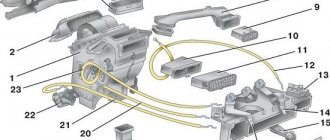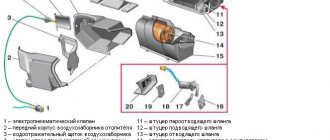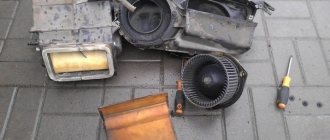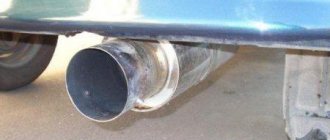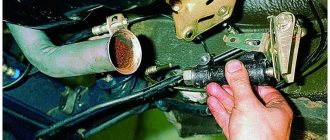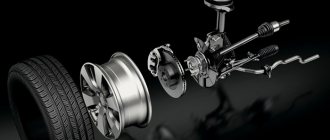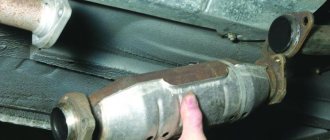In winter cold, the car's heating system must work like a clock. A breakdown of the stove can in some cases lead to loss of health or even life if it happens somewhere on the highway, far from populated areas.
This article will tell you how the heating system installed on a VAZ-2115 car works, as well as how to repair it.
Operating principle and design of the VAZ-2115 heating system
If the heater in the car does not work, especially in the cold season, there is a possibility of being left without a means of transportation, since in the cold you can simply freeze inside the car. In severe frosts, it is very difficult to clear the windshield of ice to ensure visibility, and with a non-working stove this becomes doubly problematic. You may not even be able to get to a service station.
But most often, if you know the operating principle, circuit and design of the VAZ-2115 stove, you can solve the problem on the spot yourself.
Stove control
The control of the flaps and valve on the VAZ-2114 remains mechanical and remote, just like on the VAZ-2109. The heater control unit on this car consists of three sliders (lever) and a knob for selecting the fan operating mode. The sliders are connected via cables to the stove tap and dampers. To control the heater, the driver moves the sliders, acting on the dampers and tap.
The control mechanism for the VAZ-2114 stove is implemented in an interesting way:
- The lower slider is connected by cables simultaneously to the tap and the main valve. When moved to the extreme left position, the valve opens, and the damper provides hot air into the cabin through the radiator - the stove operates in heating mode. By moving the slider to the extreme right position, the driver closes the tap, and the damper directs air bypassing the radiator - the heating system operates in interior ventilation mode.
- The upper left slider is responsible for directing air to the footwell area or through the air ducts for heating the side windows and supplying heat to the cabin (central deflector).
- The upper right slider is connected by a cable to the air supply flap to the windshield area.
Construction of the VAZ-2115 heating system
The electrical diagram of the VAZ heater operation is represented by the following elements:
- Electric motor with fan. The fan drives hot air into the car interior and onto the windshield.
- Buttons and levers for switching heat level and air flow speed. The VAZ-2115 has 3 options for heat flow rates that can be adjusted.
- Additional resistances that provide the required rotation speed of the stove fan (step-down tungsten turn coils).
- Fuses and connection wires.
The diagram of the VAZ-2115 stove presented below clearly shows its operating structure and components.
Heater (stove) control circuit for VAZ-2113, 2114 and 2115
Connection diagram for the electric motor of the heater fan and the rear window heating element:
1 – mounting block; 2 – ignition switch; 3 – ignition switch unloading relay; 4 – heater motor switch; 5 – additional resistor; 6 – heater electric motor; 7 – switch for heated rear window with control lamp; 8 – rear window heating element; K7 – relay for turning on the heated rear window
Electric motor type 45.3730, with permanent magnet excitation. Electric motor connection diagram for Lada Samara 2.
To obtain a low rotation speed, an additional resistor is used. It is secured with a screw on the left side of the heater core housing. The resistor has two spirals - one with a resistance of 0.23 Ohms and the second with a resistance of 0.82 Ohms. When both spirals are connected to the power supply circuit of the electric motor, the 1st fan rotation speed is ensured; if a spiral with a resistance of 0.23 Ohm is turned on, the 2nd speed is provided. When the electric motor is turned on without a resistor, the fan rotor rotates at the maximum 3rd speed (4100 min-1).
It is recommended to replace a faulty electric motor with a new one. The only possible repair is cleaning the collector. To do this, there is no need to remove the VAZ 2114 VAZ 2115 electric motor from the car. It is enough to remove the water deflector, the protective casing of the electric motor, and then the cover of the electric motor with the brush holder.
The operation of the stove is based on the following principle
The cooling and heating system works the same on almost all VAZ car models. The heater is turned on using a regulator located in the car itself; antifreeze is supplied to the radiator. Its temperature after warming up reaches more than 80 degrees. After which the fan starts working, operating at one of 3 speed modes.
The fan begins to create a directed air flow. It moves from the outside of the heating system into the interior of the car. Using control flaps, the driver selects heating zones, there are three in total: on the feet, on the windshield and in the car interior.
The key element of a car's heating system is the fan, and if it fails, the heating will be lost. Without it, hot air will not enter the cabin, and to heat the interior of the VAZ-2115, it will take not a couple of minutes, but a couple of hours.
Possible heater malfunctions
If the stove does not work, this indicates that the heating system has a malfunction.
The following breakdowns are typical for VAZ 2115 cars:
- coolant leakage due to a leak in the system;
- obstruction of antifreeze may be due to the presence of an air lock, which usually appears as a result of the accumulation of dirt and deposits in the system pipes.
If the heater does not work on a VAZ 2115, then this may primarily be due to an antifreeze leak. It is not so easy to notice such a problem, since the heater radiator itself is located behind the center console and is hidden from the driver’s eyes. Signs of a consumable leak include a decrease in antifreeze in the tank, as well as the appearance of wet spots under the driver's mat. As a rule, coolant entering the cabin is accompanied by the appearance of an unpleasant odor, and a greasy film may form on the windshield of the car.
If the heater does not blow due to obstruction of antifreeze, then such a malfunction is usually associated with the use of low-quality consumables. Or dirt getting into the system. In addition, a traffic jam may appear due to long-term use of the device. One of the main symptoms is cold air flow from the air ducts. To check the breakdown, you should touch the input and output lines - if there is an air lock, the first will be hot and the second cold (the author of the video is the channel In Danilych's garage).
Major electrical failures of the heating system of the VAZ-2115
If no changes occur in the heating system at any position of the switch knob, then most likely the system motor is faulty (the brushes are worn out) or there is no voltage at the terminals. But also in this case there may be problems with the ignition switch or mounting block (fuse F4 has blown).
It is important for the proper operation of the car's heating system that there is no more than 3 ohms at the engine ground (installed under the hood).
If the heater works normally at maximum engine speeds, and problems arise only at low speeds, then the cause of the malfunction most likely lies in the speed switch button or additional resistors.
If you turn on the interior heating system and hear a noise and the heater is not blowing properly, this also indicates an engine problem. Malfunctions may include jamming of the impeller or armature bearings. Malfunctions can be eliminated by replacing components or, if necessary, lubricating them. But, as a rule, these actions have a short-term effect and the problem returns.
Over time, any equipment breaks down and requires repair. Therefore, the heating system is no exception here, and the least that needs to be done for preventive purposes is to at least carry out periodic visual inspections and diagnostics. Don’t forget that over time the system ages and wears out, so the older the car, the more it needs to be prepared for the heating season.
Changing the cabin filter of a VAZ 2114
The air inside the cabin without using a filter will be filled with road dust and exhaust gases; it is clear that this will negatively affect the health of the driver and passengers. The immediate function of a car filter is to purify the air entering the cabin. As a result, it is susceptible to rapid contamination, and there is absolutely no benefit from such a filter. It only makes it difficult for air to get to the heater. For this reason, the filter must be replaced. This procedure is available for DIY replacement. First, dismantle the brush holders and the windshield wiper system, then remove the grille (plastic). After this, the nuts securing the plastic cover are removed, resulting in a small hole being freed. The filter is not attached to anything, so there should not be any problems in removing it, and replace it with a new one in the same way. All parts are mounted in place.
Conclusion
The procedure for replacing a VAZ 2114 stove is quite simple. The main point is the timely replacement of pipes and clamps if they are not suitable for further use.
After carrying out repair or maintenance work, do not forget to refill the system with coolant.
At the end of the work, when you start the engine, the stove should cope with the heating function perfectly. If the opposite happens, there is most likely an air lock.
During repairs, the vehicle must be kept on the handbrake. If the car was running before starting repair work, then the radiator will be very hot, so wait a little.
If you understand that you cannot cope with this work, please contact the service department.
Lada 2115 Comfort › Logbook › Modernization of the heating system (stove)
Hi all. Happy upcoming Defender of the Fatherland Day to everyone.
In general, one point in the operation of the stove bothered me: even when the lever for adjusting the supply of hot-cold air (hereinafter simply the GC lever) is in the extreme right position, COLD air was always blowing on the windshield and especially on the side windows
, despite the fact that the breath was already hot at my feet.
Let's figure out why this happens:
You can call this some kind of miscalculation of engineers. Also, due to this design, the flow temperature is poorly regulated. As you already understood from the picture, if you move the GC lever a little, cold air will immediately blow into your face, and not diluted with hot air. I think almost everyone has encountered this.
